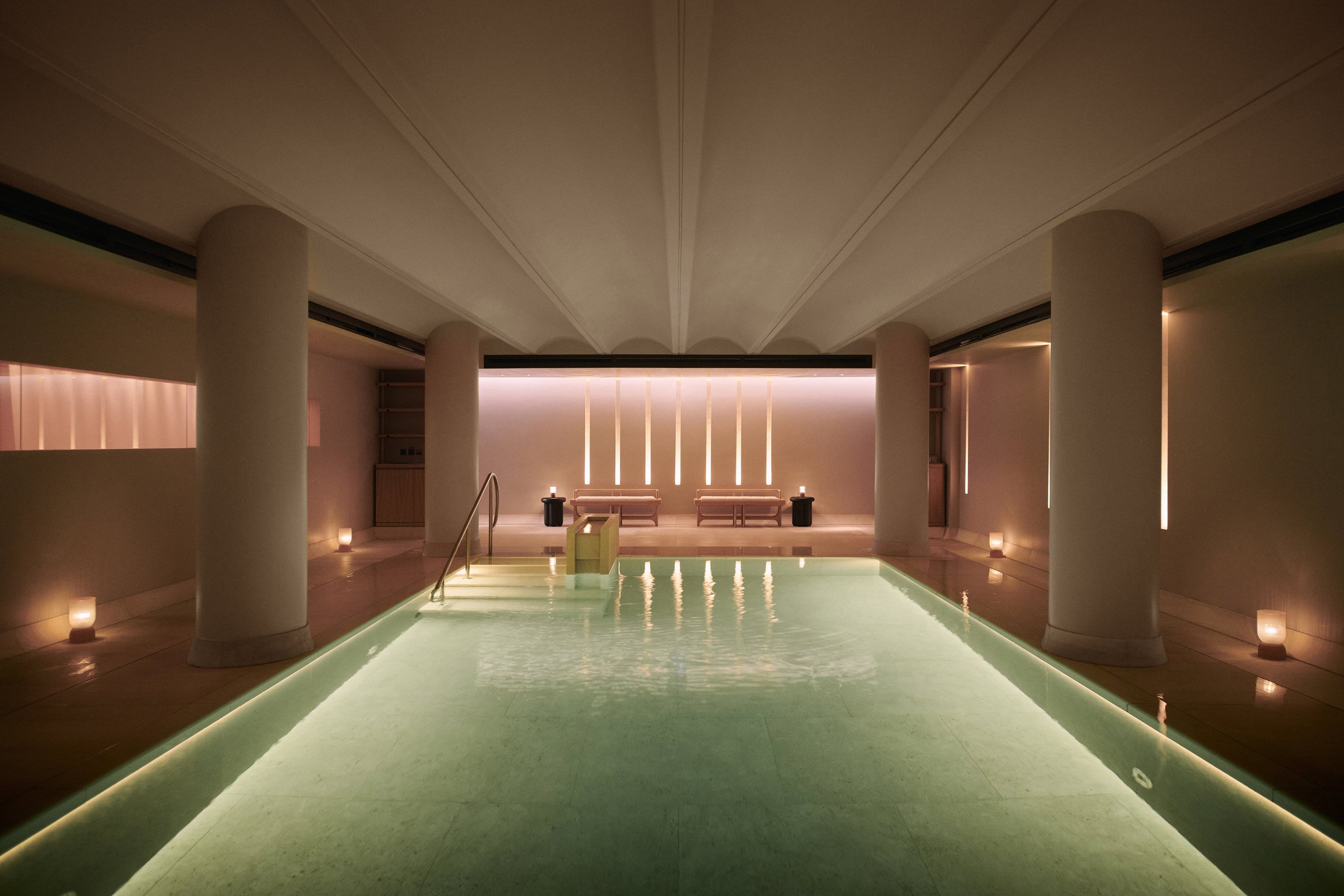Tattu is a Courtyard House in the Sky

At new London restaurant Tattu, Joyce Wang Studio has recreated a traditional Chinese courtyard home realised in sultry materials and jewels tones for a sleek dining experience overlooking the city
Taking over the uppermost floor of Outernet London’s The Now Building, a futuristic new entertainment complex, Tattu is the latest outpost of the independent restaurant brand of the same name, joining the list of spaces in Leeds, Birmingham, Edinburgh and Manchester.
The prime location in the Denmark Street area near Tottenham Court Road demanded suitably memorable interiors, and here Hong Kong- and London-based Joyce Wang and her team have brought the award-winning studio’s characteristic flair to the space.
‘Our clients were keen to bring in an authentic interpretation of the Chinese courtyard house, a residential typology that naturally gives hierarchy to public and private spaces within the home,’ Wang explains. ‘There’s also a view from within each area towards the courtyard and an appreciation for the changing seasons.’ The rooftop property came fitted with a dramatic skylight, a feature that drove the design concept from the beginning and anchored the narrative of a traditional courtyard house, which is realised here as four unique dining areas, or ‘residences’, surrounding a central courtyard garden.
At the dimly lit, timber-lined entrance, an ornate screen depicts the four mythical animals that give the restaurant its second defining feature, after the courtyard. Each of the rooms takes its character and design cues from one the four creatures: a phoenix, a koi fish, a dragon and a tiger. The first room, for example, is the phoenix-inspired Flamboyant Opposite House bar, where feathers, copper and charred timber evoke the bird’s fiery mythology. Hong Kong-born Wang also drew on her own memories and experiences, and many of the motifs and references have a story behind them. ‘On weekends in Hong Kong, the uncles and grandpas would bring their birds to the flower market pavilion in in beautiful cages. They’d play chess and pass the time to birdsong,’ Wang recalls. ‘For the back bar design in the Flamboyant Opposite House, we designed open cages for the bottle display as an ode to this tradition in many Chinese cities.’
Tattu unfolds as a series of rooms, each with its own palette and mood: here, gleaming shell and glass in one area reference the iridescent koi fish; there, emerald-green tables and chairs, set alongside a full-height window, recall ultra-luxe picnic pavilions. The spaces evoke different feelings too: The Regal Main Residence is moodier, with gleaming metal and marble details.
The heart of the restaurant is undoubtedly the central courtyard, covered by the building’s skylight and lined by the eaves that cover the adjacent booths. These roof structures enhance the feeling of being outside, but what really sets the immersive outdoor scene is the elegant 20-metre-long handcrafted cherry blossom chandelier that hangs overhead. Specially commissioned from British lighting studio Cox London, its rose-tinted metal leaves and flowers are a reinterpretation of Tattu’s signature cherry blossom tree motif.
The menu, devised by executive chef Andrew Lasseter, does Wang’s design justice. Intriguing dim sum dishes include date and water chestnut gyozas with figs, spinach and red vinegar; Chilean sea bass, prawn and black bean gau (dumplings); and chicken shumai, while the fish-forward small plates and mains are a highlight. The cocktails are imaginative and the wine list extensive, but those who prefer something more surprising should ask the sommelier for his little black book: a notebook with handwritten descriptions of experimental and unusual wines from independent wineries, each chosen by one of the sommeliers and accompanied by personal reviews from satisfied wine enthusiasts — a warming, personal touch that’s in keeping with Wang’s attention to detail and intriguing moments throughout the restaurant. ‘The colours, textures, forms, movements and habitats of the four animals became our inspiration for the sumptuous material selection,’ Wang says. ‘And the menu also feels theatrical and rich, so the surroundings really complement the dining experience.’
Text / Simone Schultz
Images / Edmon Leong

























